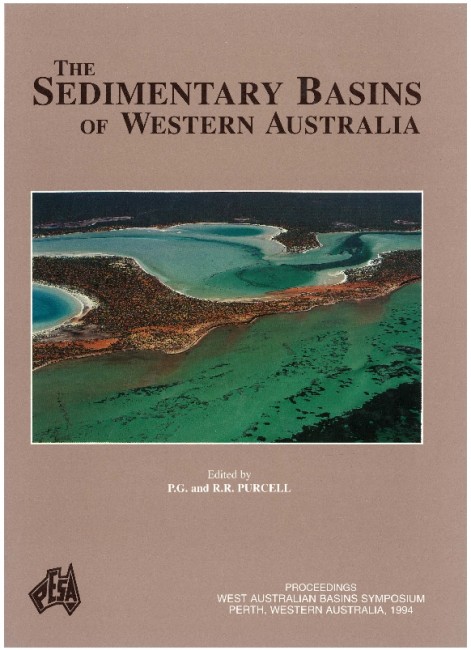Publication Name: The Sedimentary Basins of WA
Authors: J.B. Colwell and H.M.J. Stagg
Publication Volume: 1
Date Published: July 1994
Number of Pages: 23
Reference Type: Book Section
Abstract:
In mid-1993, the Australian Geological Survey Organisation (AGSO) acquired approximately 3600 km of high-quality regional deep (16-second record length) seismic reflection data over the offshore Canning Basin. This data-set is linked to the previously acquired deepseismic surveys in the northern Carnarvon Basin to the southwest and the Browse Basin to the northeast.A first-pass interpretation of three key lines from the data-set indicates that the major part of the offshore Canning Basin is dominated by sag-phase geometries, suggesting that its formation was largely controlled by processes of early Palaeozoic-Mesozoic lower crustal thinning. Rarely are extensional tilt blocks observed.
Different parts of the basin have significantly different geometries. The offshore Fitzroy Trough contains a thick,
structured, intracratonic Palaeozoic section overlying dipping, basin-forming detachments, and overlain by
Jurassic and younger sag deposits. The Bedout Sub-basin has the shape of an asymmetric sag containing up to eight kilometres of mainly Mesozoic sediments. This contrasts with the Rowley Sub-basin which is dominated by a seaward-thickening wedge of mainly Triassic and Jurassic sediments, which reach a maximum thickness
of about 10 km at the lower continental slope. A major depocentre appears to have existed at, or west of, the
present-day continental margin during the Early and Middle Triassic.
The origins of the anomalous Bed out High remain an enigma. The high appears to have undergone normal
faulting (and possibly thrusting), folding and erosion, and includes Permian volcanics.


